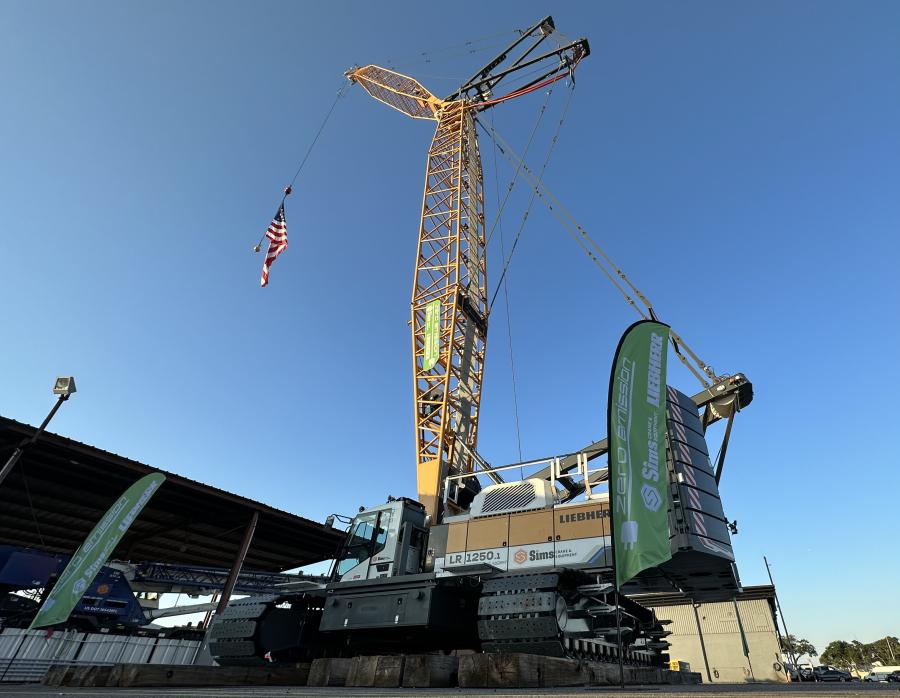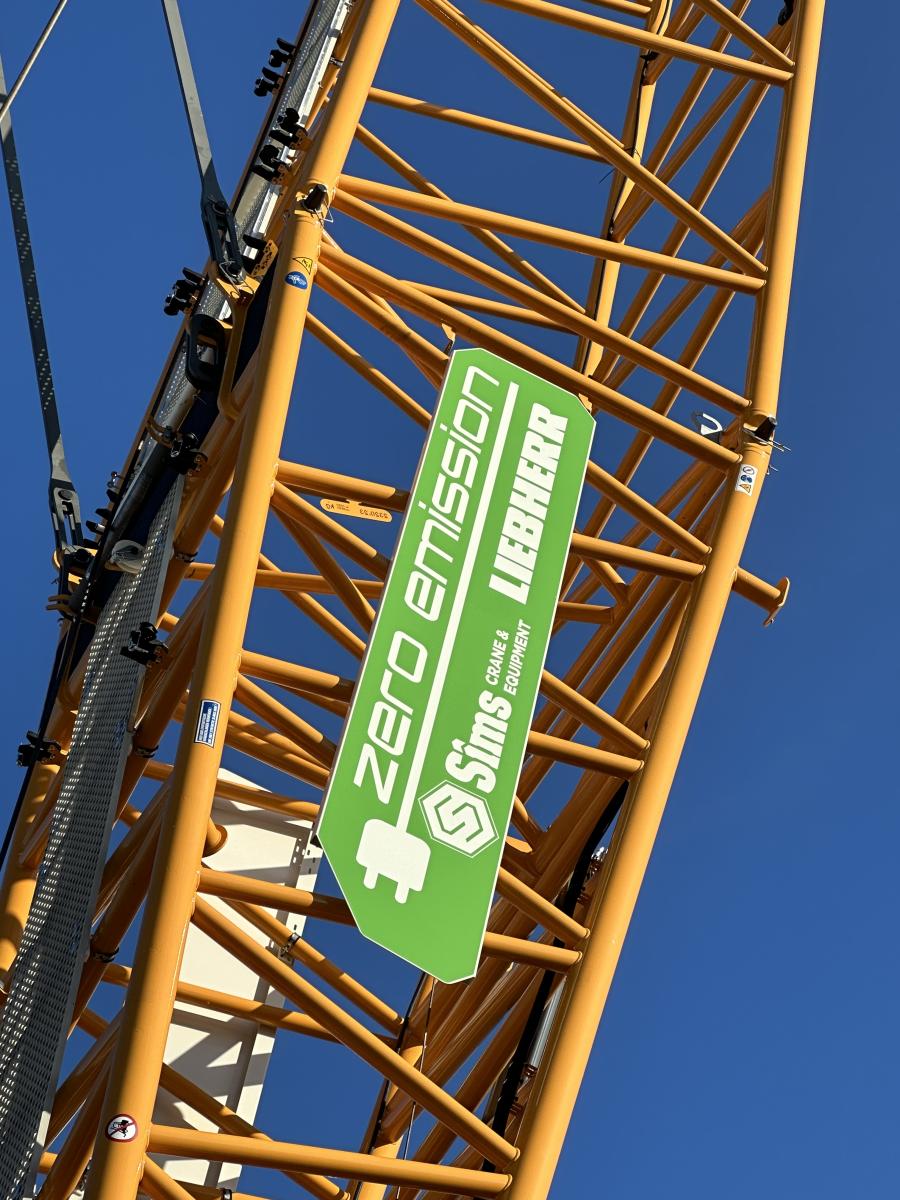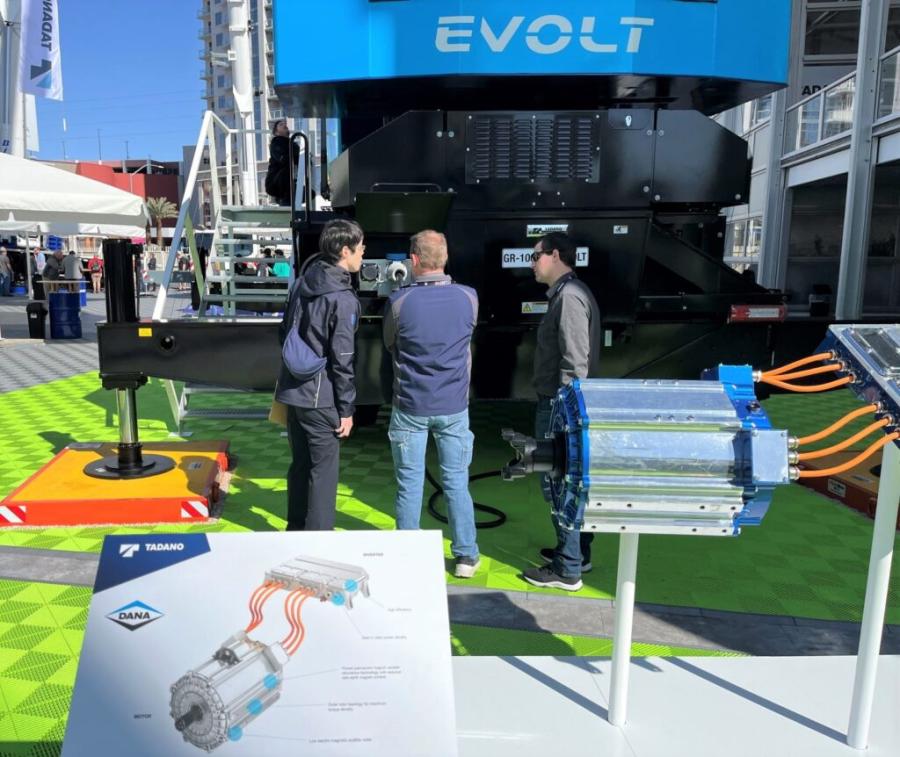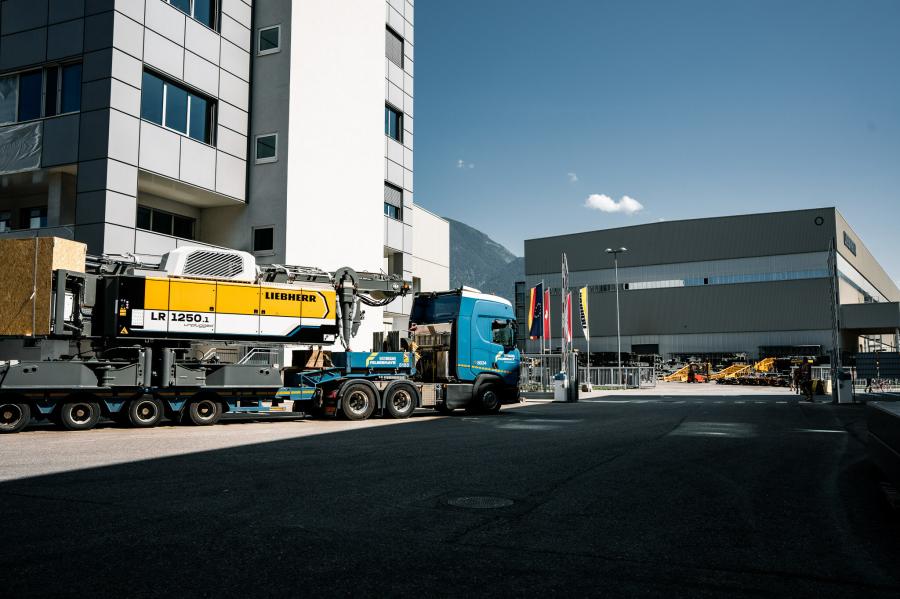
Mon October 9, 2023
Lucy Perry – CEG CORRESPONDENT
Electric-powered equipment is nothing new to job sites. Manufacturers have been developing battery-powered machines for years before the fed adopted its goal of zero emissions by 2050. But now mobile crane manufacturers are setting their own zero-emission goals and rolling out new models that use no diesel fuel. Though many are taking a wait-and-see attitude, the road is wide open for a sustainable crane market.
The crane industry "must be open-minded and bold to break new ground," said Gerhard Frainer, managing director, sales of Liebherr-Werk Nenzing.
"If you go out about three years, there will be approximately 700 different types of electric vehicles roadside," said David Knight, CEO of Terbine.
The company provides technology for the exchange of IoT data between the mobility and energy sectors. He spoke at ConExpo in March.
Knight urged the construction industry to prepare for the widespread adoption of electric vehicles in the not-too-distant future. He noted five main reasons equipment end users in the construction industry in general are investing in electric machinery.
Lower operating costs, lower maintenance costs, federal and state tax credits, carbon credits and offsets and environmental, social and corporate governance (ESG) goals all play a part.
First, the savings on diesel costs, alone, are significant, he said. Most OEMs cite four to eight hours of runtime for average use on electric compact equipment, with an eight-hour overnight charge.
There's no idle on an electric machine. An operator can get a day or more of productive work in because they're not running a machine for eight hours a day.
Knight pointed out that reciprocating engines possess many friction-generating parts, which fail. The friction and heat generated with a running engine are really what contributes to parts replacement and maintenance.

Incentives can offer savings in the tens of thousands, or even hundreds of thousands of dollars, across a single fleet.
As Knight explained it, carbon credits, also known as carbon allowances, "work like permission slips" for emissions. When a company buys a carbon credit, usually from the government, they gain permission to generate one ton of CO2 emissions. When one company removes a unit of carbon from the atmosphere as part of their normal business activity, they can generate a carbon offset. Other companies can then purchase that carbon offset to reduce their own carbon footprint.
ESG goals are trending and expected to become more common with time, said Knight. Without goals and corresponding policies, organizations risk loss of investors, a damaged reputation and fines for regulatory noncompliance.
There is every reason to believe the electric vehicles and electric equipment will continue to develop and improve over time, said Knight.
This evolution, in turn, will make a greater level of adoption even more likely in the very near future.
The architectures of electric vehicles are going to even higher voltages, he said. The higher the voltage, the less current needed. That also means less heat. And, while voltages are very good now, they are expected to improve significantly in the coming years, he said.
"They're going to be really good in three to five years, and that's going to allow for even faster and more efficient charging than ever before."
At ConExpo this year, more than one construction crane manufacturer unveiled new electric-powered models. Here are two stand-out introductions.
Tadano Keeps to Its Mission
To show it means business, Tadano adopted a new motto to mark the occasion: "Our True Mission: Zero Emissions."
"This shows that we're on the right path with Our True Mission: Zero Emissions and our Tadano Green Solutions," said Toshiaki Ujiie, CEO. "We'll be able to achieve our sustainability goals in our role as a highly innovative company that is aware of its responsibility towards our world."
He said, too, the company will "take on a trailblazer role in our industry with our technologically leading solutions."

Tadano is committed to reducing CO2 emissions from its business activities by 25 percent and from the use of its products by 35 percent by 2030.
The Houston, Texas, crane manufacturer's ultimate goal is to be completely climate neutral by 2050. Corporate has grouped its sustainability solutions under Tadano Green Solutions (TGS), and includes fully electric rough-terrain cranes.
In Las Vegas, Tadano unveiled a working prototype of the GR-1000XLL EVOLT. It will officially launch next year in the United States and Canada. With the ability to travel to work sites and tackle lifts with energy supplied by its batteries, it offers fully zero-emission operation. The crane offers up to nine hours of crane operation on a single battery charge. That's five operating hours with a travel distance of up to 12.5 mi.
The company noted that battery recharging takes just two hours. Fast charging on a US-combo CCS1 connection facilitates the process.
"Only about seven hours with normal charging on a three-phase 240 VAC, 100A commercial power supply connection" is required, said the manufacturer. "When the crane is plugged into a power source, its operating time is unlimited."
With a 194 kW electric motor, the rough-terrain has as much capacity and operating speed as its diesel-driven counterpart, the GR-1000XLL-4. Tadano calculates that the GR-1000XLL EVOLT will save about 2,200 gal. of diesel.
Keeping with the green theme, Tadano also introduced its diesel-driven APU auxiliary power unit on a GR-800XL-4 rough-terrain crane. It is approved in both the United States and Canada as an option for new orders of Tadano RT models GR-1000XLL and GT-1000XL-4, according to the company.
"The unit's 9-hp two-cylinder engine uses just 0.2 gallons of diesel fuel per hour while putting out 972W," said Tadano. "That's enough to supply electric power for floodlights, aviation beacon, window wipers, HVAC system, USB outlet and important display functions in the cab."
Tadano calculates that the APU can reduce fuel consumption and CO2 emissions by approximately 25 percent, compared with running the main engine at idle.
The company took the opportunity to announce products in development, including an electrified version of its flagship CC 88.1600-1 lattice-boom crawler.
An electrical cable connection will ensure that the giant will be able to run with absolutely zero CO2 emissions. The crane's electric motor will have a power of 2 x 390 kW so that it can deliver the same lifting capacity as its diesel-driven counterpart.
"In addition, there will be flexible options for supplying power, with 6,000V and 6,600V 50Hz connections and 6,600V 60Hz connections."
No Compromise for Liebherr
Liebherr launched the first battery-powered crawler crane, which it says shows no compromise in performance over conventional crawler crane versions.
The LR 1200.1 unplugged delivers a maximum lifting capacity of 220 tons, and lifts 257 tons.
With its electric power, the new machines are emissions free and generate a very low noise level, the manufacturer said.
"Eliminating emissions and reducing noise is a huge advantage in areas sensitive to noise and also for the people working on the job site."

Frainer said the company's aim with its unplugged cranes was to offer customers an alternative drive design.
"As we have already seen with the LB 16 unplugged, the first battery-powered drilling rig, the strategy is a complete success," he said.
Strict requirements regarding environmental sustainability in tenders for construction projects increase the demand for advanced technologies, added Frainer.
"For us, it was clear that we extend and successfully establish the design in further product groups."
Two U.S. crane companies are putting the nation's first battery-powered crawler crane to the test this fall. Liebherr introduced the LR 1250.1 earlier this year.
The first two units to roll off the line went to Sims Crane of Tampa, Fla., and Bigge Crane of San Leandro, Calif.
Sims partnered with Liebherr to introduce the crawler to the U.S. market. The company took possession of its rig, headed to the rental fleet, in February.
"We are honored to partner with Liebherr and be on the forefront to serve a vastly growing need for alternative energy," said Jackson Sims, vice president.
The crawler crane's battery-powered engine cuts local carbon emissions completely, the company said. The machine is capable of operating for eight hours unplugged, or for an unlimited amount of time when connected to a power source.
Liebherr and Sims said there is no compromise in performance between the electric version of the crawler crane and its diesel-powered counterpart.
According to Sims, the crawler is significantly quieter than its diesel counterpart, making it ideal for jobs where noise pollution may be a concern.
Bigge added the crane to its rental fleet in September. The company said the crawler is the first of its kind not only in California but on the west coast.
Bigge said it acquired the all-electric crane to offer customers an option for an environmentally conscious heavy lifting solution. The crane rental company especially liked that the rig can operate indefinitely while connected to shore power, or for eight hours unplugged.
"We have a longstanding relationship with Liebherr and are excited to add their first all-electric crawler crane" to our fleet, said Joe Nelms, vice president.
"Bigge's roots have been established in the San Francisco Bay area since 1916, and we're excited to be a part of California's push for a greener future." CQ
 Cranes Equipment
Cranes Equipment Articles
Articles Email Updates
Email Updates Sell Your Machines
Sell Your Machines

 Cranes Equipment
Cranes Equipment Cranes Dealers
Cranes Dealers Cranes Articles
Cranes Articles Email Updates
Email Updates Sell Your Machines
Sell Your Machines